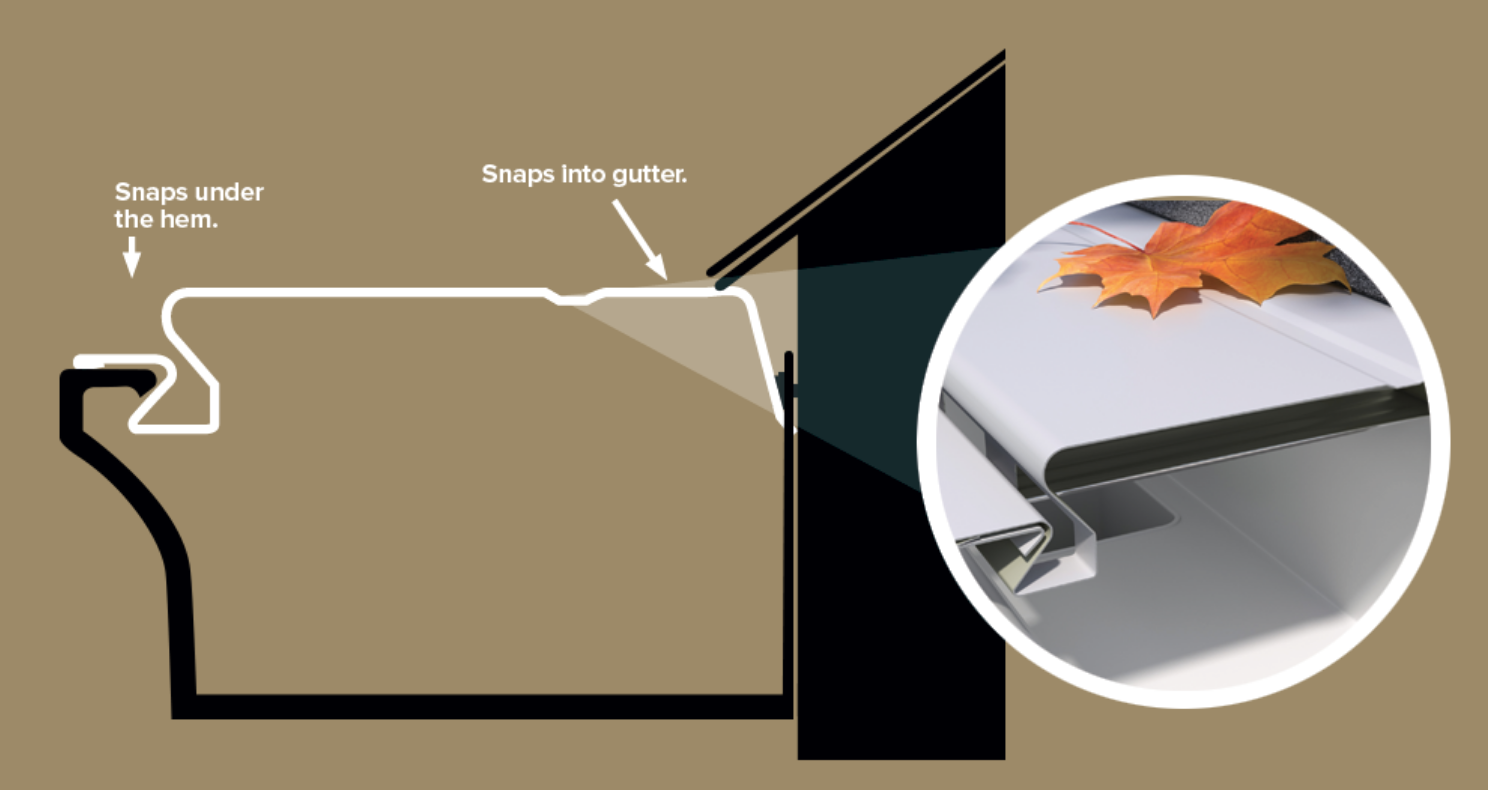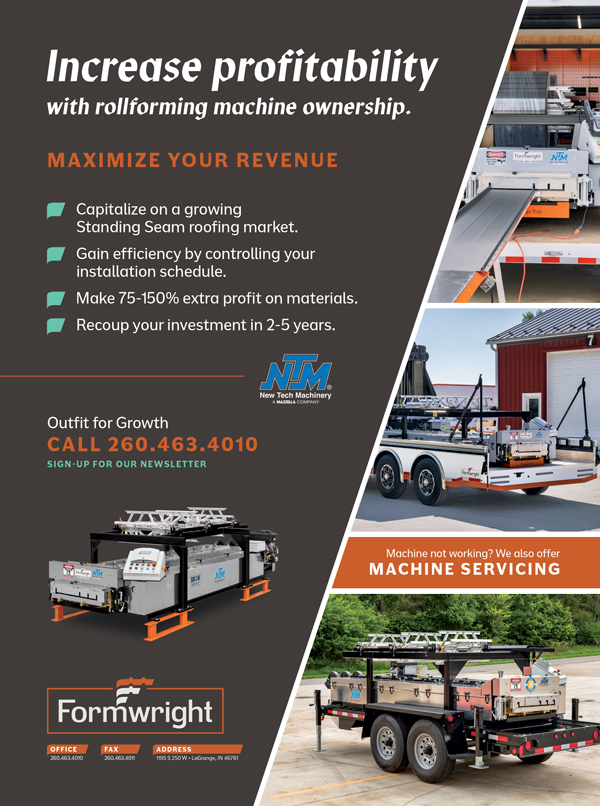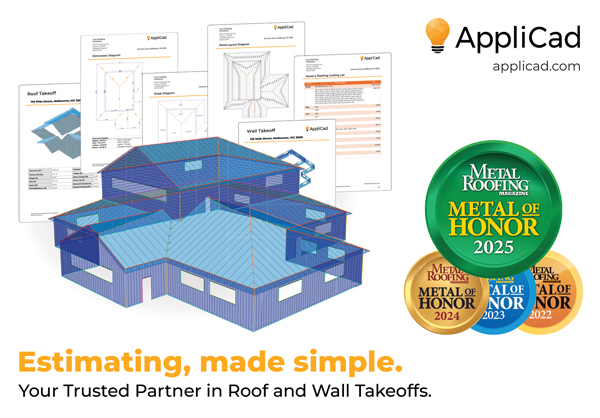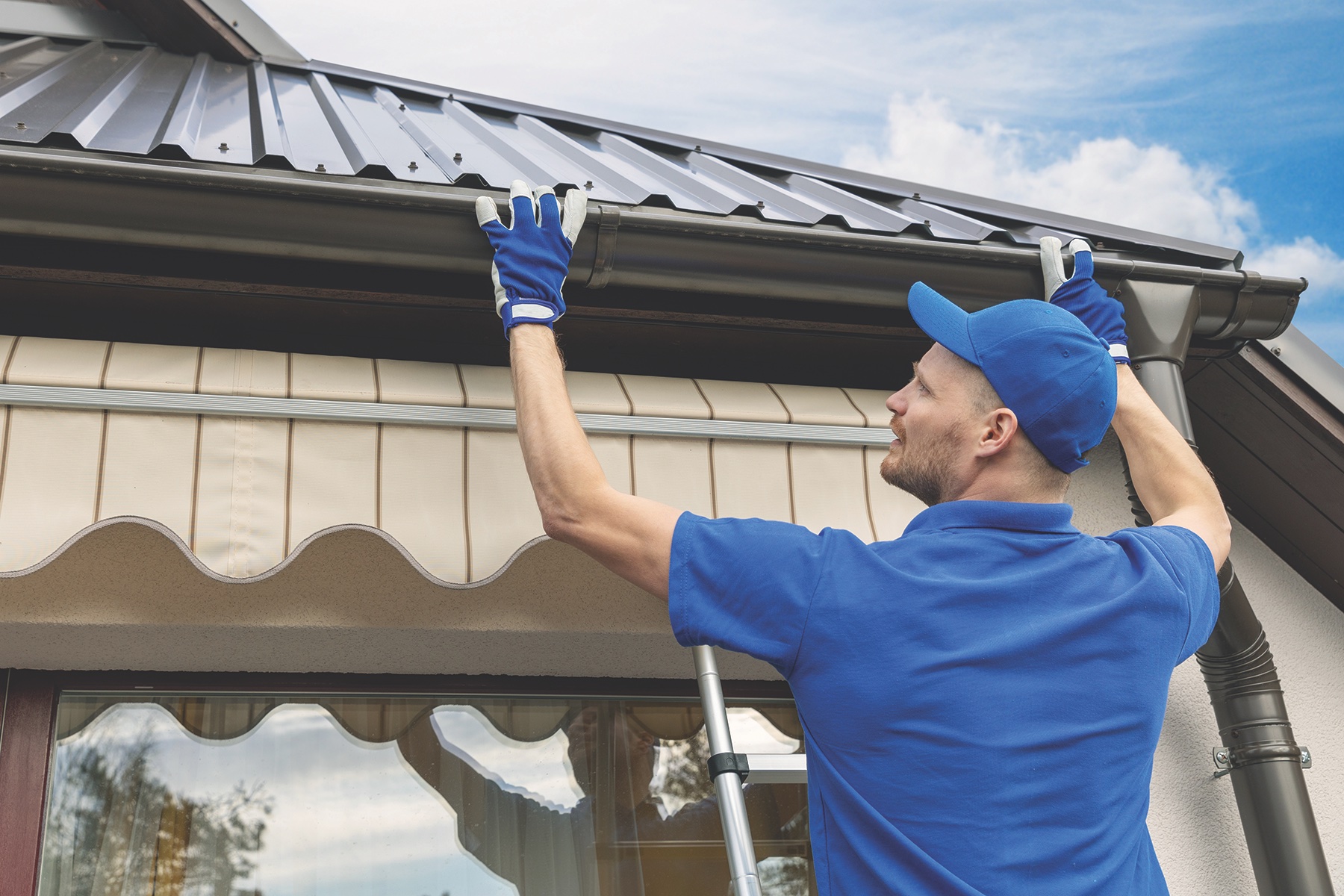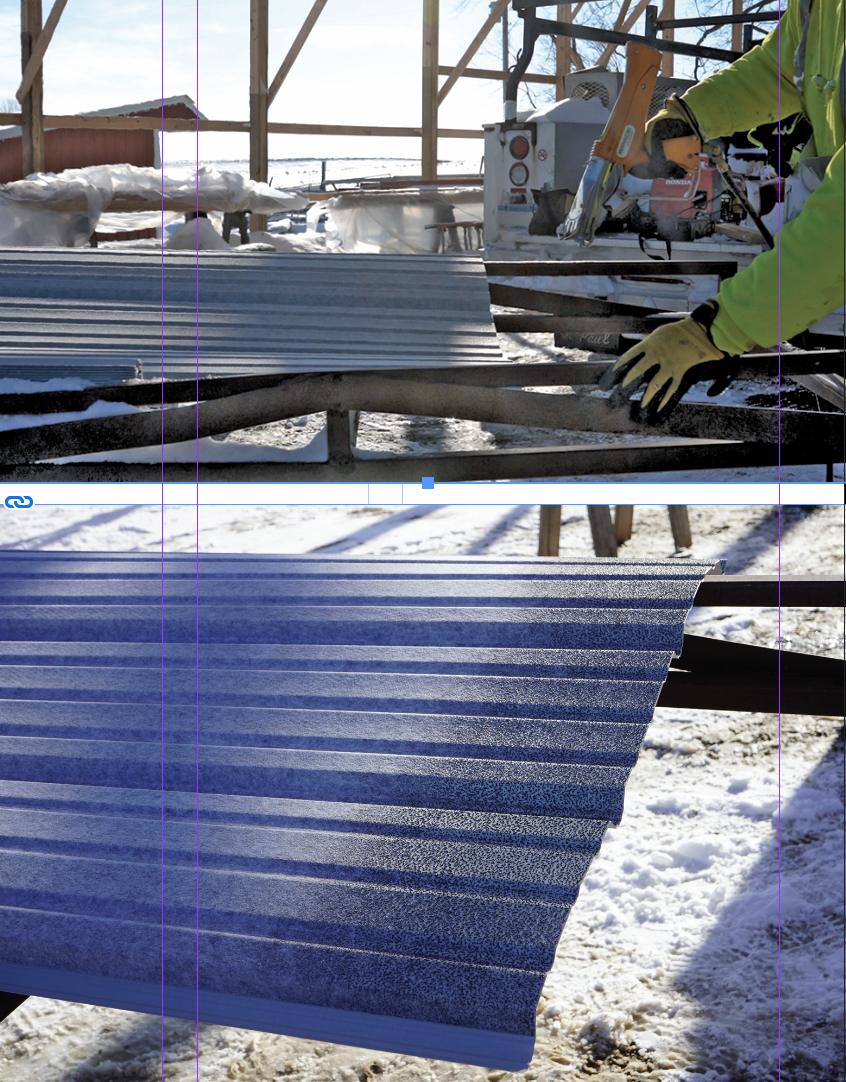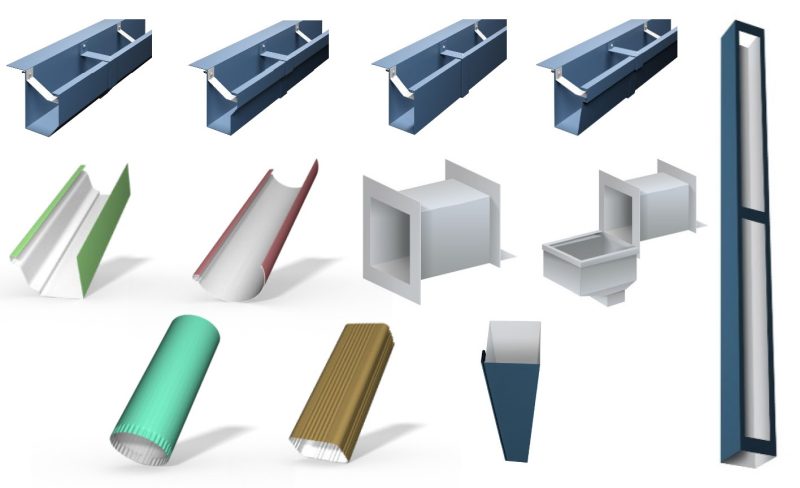By Karen Knapstein
A well-functioning gutter system improves the integrity of a building. While gutter guards are considered an add-on, rather than a necessity, the benefits of a gutter guard system are undeniable.
The gutter system prevents damage caused by roof runoff such as foundation damage, settling, basement flooding, and other damage caused by water. Clogged gutters are one of the most common problems that building owners experience — yet it’s preventable. Gutter guards, which keep gutters flowing freely, attach to (or are installed in) rain gutters to filter and block leaves, debris, and animals from entering the system.
Several types of guards are available, including (but not limited to) basic screens that have a structure incorporated to hold it up; perforated covers with holes or louvers; stainless steel filters; and guards with a nose-forward curve design. They have varying degrees of effectiveness, depending on the situation.
Volume
One of the top considerations when determining which gutter guards will work the best are the roof load and type of debris that will be challenging the gutters. Since water flows faster off metal roofs than asphalt or other roof types, gutter systems must be able to accommodate the speed and volume.
When a lot of rain is flowing down the roof, either because it’s raining heavily or the roof is large and sheds a lot of water, the water may come off the metal so fast that a nose-forward design can fail. The water overshoots the entry point into the gutter at the front of the nose. However, if a nose-forward gutter guard has holes in the top of the guard, it accepts some of the water into the gutter, which slows down the rest of the water so it can go around the nose into the gutter.
Debris
If broad leaf trees are in the vicinity, any of the guard types mentioned above will be a suitable choice. Even if the leaves aren’t deflected immediately, they will dry up and blow off.
Pine needles present a much bigger challenge. The needles are so thin they work themselves into just about everything. A solid guard in which the water flows over the forward edge (nose forward design) into the gutter is recommended. It deflects the needles since there are no holes in which to get caught up, while allowing the water entry into the gutter.
Debris that accumulates in gutters encourages standing water, which can cause rust or leaks through the roof and walls into the building. And during freezing weather, the standing water can cause ice dams.
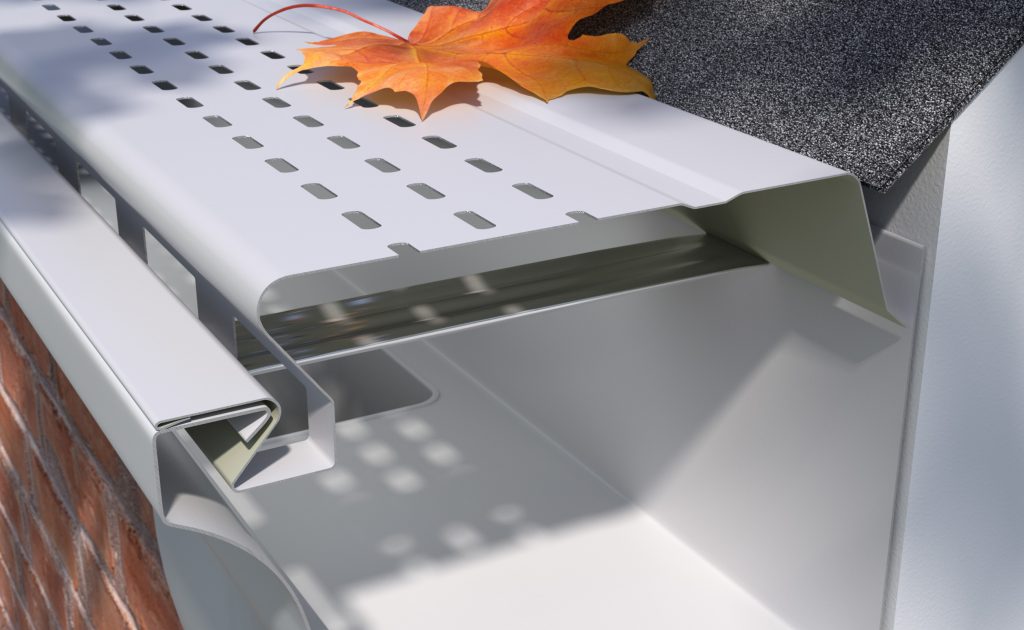
The perforations on the high-capacity gutter guard from E-Z Gutter Guards (Midwest Manufacturing) slows the water flow so it effectively captures the water flowing off a metal roof. Photo courtesy of E-Z Gutter Guards
Pests
Birds, rats, and other critters may use accumulated debris to nest in the gutter system. Guards help, but they must be installed correctly to deter nesting. Most guards are installed flush with the gutter, so if there are no gaps at the front and back, critters really can’t get in.
However, because certain types of gutter guards/covers create dry shelter, which makes it an even more attractive location for stinging insects, birds, and squirrels to nest and become a major nuisance, it’s important to secure the ends of the guards. To do this, extend the gutter screen/guards by about 1”-2” beyond the end cap and fold/bend the end down into the gutter, behind the end cap.
Other gutter guard options are products such as foam inserts or brushes. Used alone or in conjunction with gutter covers, they can be inserted into the gutters to fill the space and keep out debris and pests.
Brush-style gutter guards are comprised of polypropylene bristles that extend from a metal wire core. The bristles prevent debris from settling in the gutters, which allows water to flow through the gutter system without creating a shelter space for pests. Brush-type guards also prevent snow compaction so snow will melt and exit the gutter faster. They don’t need fasteners; they need only be sized correctly and placed in the gutter channel to work.
Safer & Easier Installation
These days, many companies use only safety harnesses for fall protection. While the employee is safe from a fall to the ground, they don’t always have adequately installed scaffolding or planks for sure footing or to reach the work, so they can’t work confidently or effectively.
Decades ago, rather than safety harnesses, companies invested in scaffolding to assure the entire job was set up so workers could easily access all areas of the roof and gutter and maintain sure footing. Setting up proper scaffolding costs money, but employees do a better job when they have sure footing. The cost of the scaffolding is usually paid back — and then some — by improved productivity, morale, employee retention, profits, and an overall safer and more enjoyable workday. MR
On a metal roof, it’s important to not hang the gutter too high. When the roof is almost inside the gutter, there’s no room left to put in gutter protection. If the gutter is installed too high, the water will bounce out of the gutter. Gutters should be hung a little lower than if the roof were covered with shingles.
To protect gutters installed below metal roofs, it’s important that an engineered snow retention system (or perhaps an edge melt system) be installed to prevent massive slide-offs. Avalanches of ice and snow can destroy a gutter system and cause other significant damage. In areas prone to heavy snow, hangers should be installed every 16”.
Thank you to the following manufacturers and suppliers for allowing us to use their expertise to educate roofers:
•Englert, Inc. www.englertinc.com
•Gutter Brush www.gutterbrush.com
•Midwest Enterprises (E-Z Gutter Guards) e-zgutter.com


